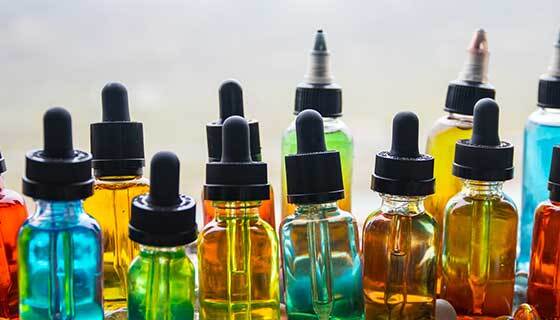E-liquid, also known as vape juice or e-juice, is a critical component of vaping. It is the substance that gets vaporized by e-cigarettes and other vaping devices to produce the inhaled vapor. The composition, flavor, and nicotine content of e-liquids can vary widely, making it essential for consumers to understand what they’re using. This article explores the ingredients, varieties, and safety considerations of e-liquids.
Ingredients of E-Liquid
The primary ingredients in e-liquid are:
- Propylene Glycol (PG): A synthetic liquid that provides a throat hit similar to smoking. It’s commonly used in food, cosmetics, and pharmaceuticals.
- Vegetable Glycerin (VG): A natural substance derived from vegetable oils, VG produces thicker vapor and has a slightly sweet taste. It’s also widely used in food and cosmetic products.
- Nicotine: This addictive substance is optional in e-liquids and can be present in varying concentrations. Nicotine-free options are also available.
- Flavorings: These are food-grade additives that give e-liquids their distinctive tastes, ranging from traditional tobacco and menthol to fruity, dessert, and beverage flavors.
Varieties of E-Liquid
E-liquids come in many varieties, categorized primarily by their PG/VG ratio and nicotine content:
- PG/VG Ratio: The ratio of PG to VG affects the vaping experience. High-PG liquids offer a stronger throat hit and are better for flavor, while high-VG liquids produce thicker vapor clouds and are smoother on the throat.
- Nicotine Levels: E-liquids can contain anywhere crystal bar salts from 0mg to over 50mg of nicotine. Users can choose the level that best suits their needs, whether they’re looking to quit smoking or simply enjoy vaping.
- Flavor Profiles: The range of flavors is vast, catering to all preferences. Some popular categories include tobacco, menthol, fruit, dessert, and beverage flavors.
Safety Considerations
While vaping is often considered a safer alternative to smoking, it’s not without risks. Here are some safety considerations:
- Quality and Regulation: Ensure the e-liquids are from reputable manufacturers who follow safety standards and regulations. Poor-quality e-liquids may contain harmful substances.
- Nicotine Addiction: Nicotine is highly addictive, and users should be cautious about their intake, especially young people and non-smokers.
- Proper Storage: E-liquids should be stored in a cool, dark place, out of reach of children and pets, to prevent accidental ingestion.
- Potential Health Effects: While generally considered less harmful than smoking, the long-term health effects of vaping are still being studied. Users should stay informed about new research and regulatory updates.
E-liquids are a versatile and integral part of the vaping experience. Understanding their ingredients, varieties, and safety considerations can help users make informed choices. As with any consumable product, prioritizing quality and being aware of potential risks is essential to ensure a safe and enjoyable vaping experience.
